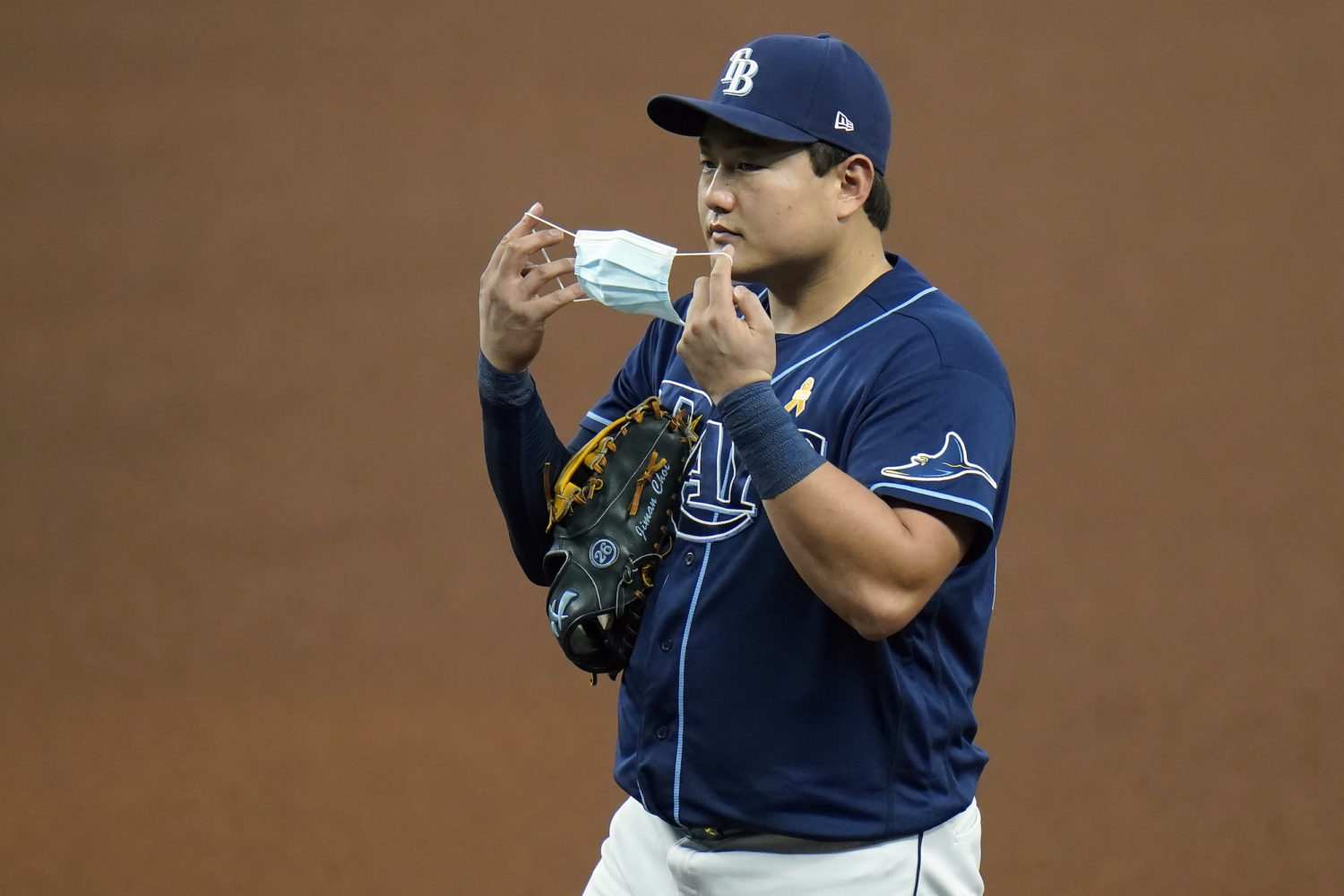 Covering COVID-19 is a daily Poynter briefing of story ideas about the coronavirus and other timely topics for journalists, written by senior faculty Al Tompkins. Sign up here to have it delivered to your inbox every weekday morning.
Covering COVID-19 is a daily Poynter briefing of story ideas about the coronavirus and other timely topics for journalists, written by senior faculty Al Tompkins. Sign up here to have it delivered to your inbox every weekday morning.
My wife and I watch the division-leading Tampa Bay Rays every evening and while I appreciate some players, like Ji-Man Choi, consistently wearing COVID-19 masks, others in the dugout don’t. Some coaches wear those neck gaiters, which researchers have said are barely better than wearing no face covering.
I am impressed that after such a rough start of the short season, teams have taken COVID-19 seriously, especially while traveling. But with the opening of the NFL season, even larger audiences will be tuned in to how pro sports address COVID-19 protection.
NFL Players Association president J.C. Tretter wrote a letter to members that said, “From August 12-20, there were a total of 58,397 COVID tests conducted on both players and staff members across the NFL. There were zero positive tests among players and just six among other personnel.”
The NFL said the following week’s results were similar. The NFL and NFLPA announced:
Over 58,000 tests were administered from Aug. 21 to Aug. 29, and just 10 positive confirmed cases emerged combined between players and non-player personnel — four new confirmed positive tests among players, and six among other personnel — making for a positive test case rate of 0.017%.”
Seven teams said they will not allow any fans to any games this season — the Las Vegas Raiders, Los Angeles Chargers, Los Angeles Rams, New York Giants, New York Jets, Philadelphia Eagles and Washington. The other teams are either making plans for limited capacity seating or are waiting for the first few weeks to unfold before making any decisions about fans. It will be interesting to see how strongly the stadiums enforce COVID-19 precautions.
Don’t underestimate how much influence pro sports stars can have on fans, particularly on men who might not be warm to wearing masks.
What happened to our focus on the climate?
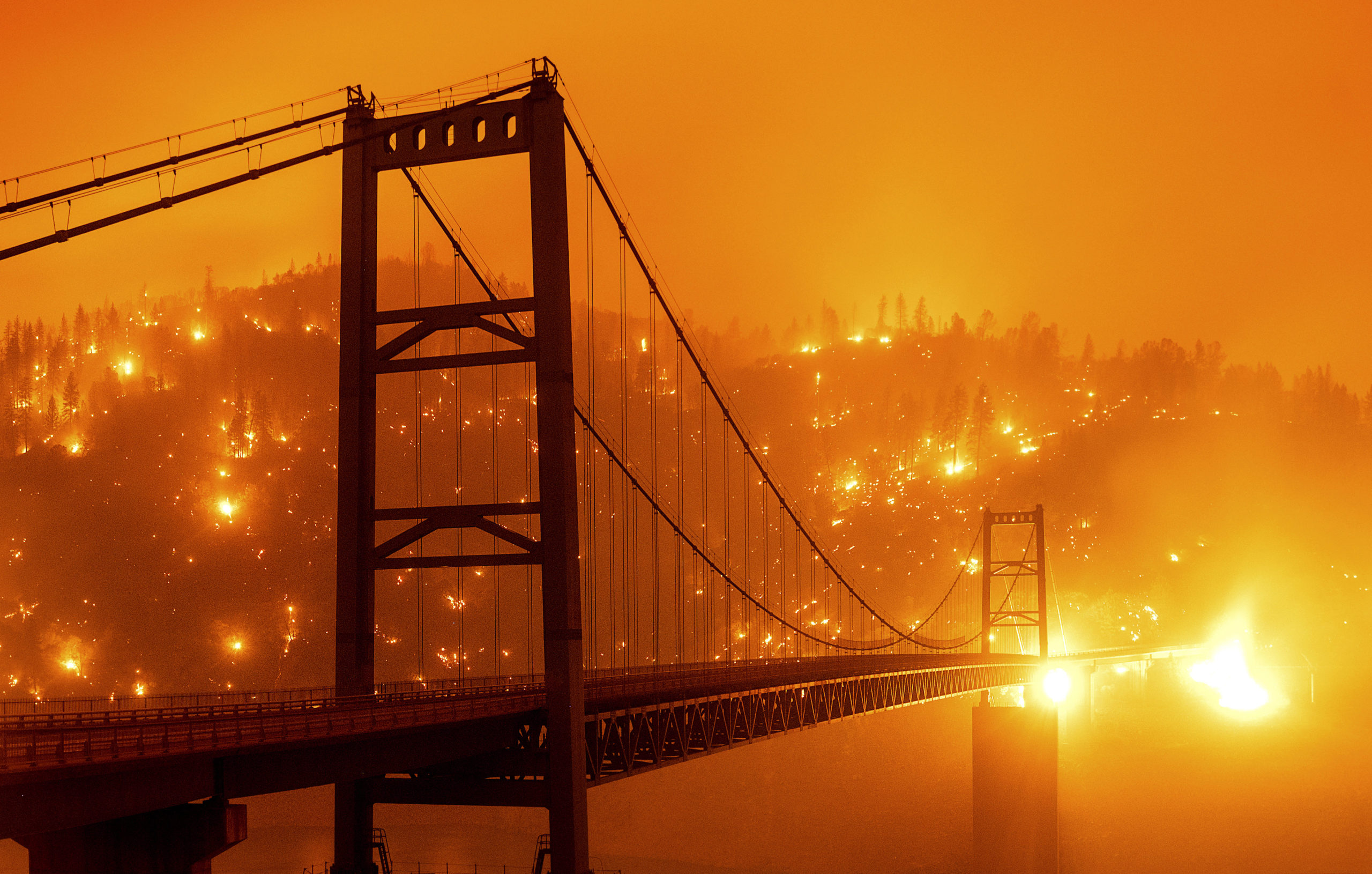
In this image taken with a slow shutter speed, embers light up a hillside behind the Bidwell Bar Bridge as the Bear Fire burns in Oroville, California, on Sept. 9. The blaze, part of the lightning-sparked North Complex, expanded at a critical rate of spread as winds buffeted the region. (AP Photo/Noah Berger)
From January to March, the story of 2020 was climate change. Candidates called it the No. 1 topic of our time. Poll after poll showed younger voters considered it to be the No. 1 election issue by a stretch.
Climate is at the center of the unfolding catastrophe in the western parts of the United States.
California’s battles with historic wildfires are made worse by record hot temperatures. The National Weather service remarked that Sunday was “one of the hottest days since official weather records began across much of Southwestern California.”
On Saturday, Denver recorded its latest triple-digit temperature, 101 degrees. Then Denver hit another record on Sunday, at 97 degrees. As if to underscore the extreme weather we have been warned to expect, snow then moved in on Tuesday.
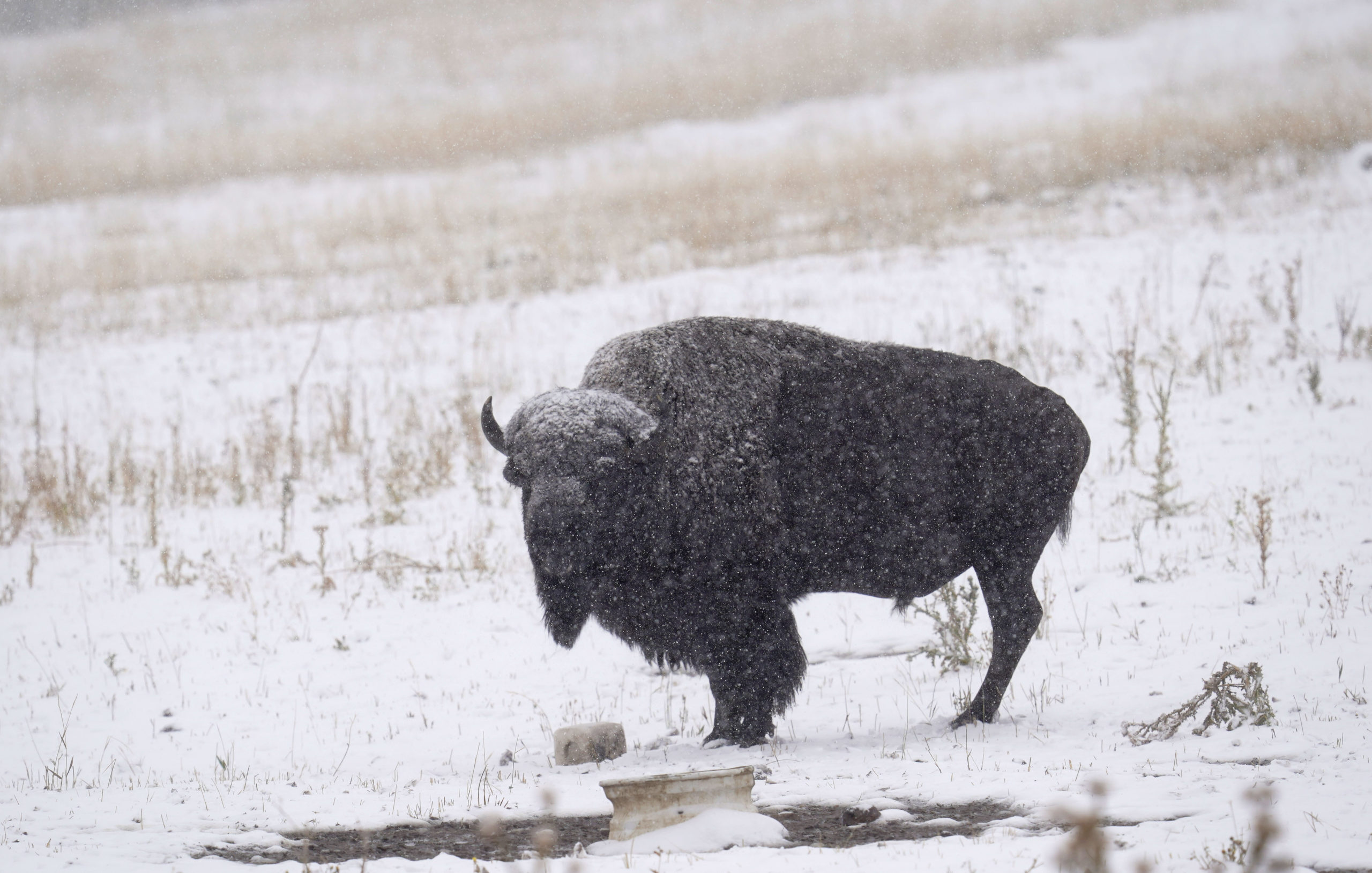
A lone bison stands as a storm packing high winds and snow sweeps through the intermountain West, Sept. 8, in Evergreen, Colorado. (AP Photo/David Zalubowski)
Dozens of significant climate change reports have come out in 2020 and you have likely seen or heard of none of them because we are so (rightfully) focused on COVID-19, elections and the economy. And yet, when everything else is settled and set right, climate change will have progressed another year or two. As Time put it:
In the future, we may look back at 2020 as the year we decided to keep driving off the climate cliff — or to take the last exit. Taking the threat seriously would mean using the opportunity presented by this crisis to spend on solar panels and wind farms, push companies being bailed out to cut emissions and foster greener forms of transport in cities. If we instead choose to fund new coal-fired power plants and oil wells and thoughtlessly fire up factories to urge growth, we will lock in a pathway toward climate catastrophe. There’s a divide about which way to go.
The Time story added that the decisions that leaders make in the next weeks may influence how the nation acts toward climate issues for years to come. Trillion-dollar bailouts will have to be repaid with money that might have stimulated renewable energy efforts. Time said:
The time frame for effective climate action was always going to be tight, but the coronavirus pandemic has shrunk it further. Scientists and policymakers expected the green transition to occur over the next decade, but the pandemic has pushed 10 years of anticipated investment in everything from power plants to roads into a months long time frame. Countries have already spent $11 trillion to help stem the economic damage from COVID-19. They could spend trillions more. “It’s in this next six months that recovery strategies are likely to be formulated and the path is set,” says Nicholas Stern, a former World Bank chief economist known for his landmark 2006 report warning that climate change could devastate the global economy.
A new study published in the science publication Nature noted that the economic slowdown in the first half of this year because of COVID-19 may make a small difference in cooling the climate short-term, even if the significant industry shutdown and decreased driving is not nearly enough to have a significant long-term effect.
This week, President Donald Trump’s Commodity Futures Trading Commission warned that climate change will create floods, droughts, storms and wildfires that will upset financial markets as well as insurance and mortgage sectors. CFTC commissioner Rostin Behnam wrote:
“As we’ve seen in the past few weeks alone, extreme weather events continue to sweep the nation from the severe wildfires of the West to the devastating Midwest derecho and damaging Gulf Coast hurricanes. This trend — which is increasingly becoming our new normal — will likely continue to worsen in frequency and intensity as a result of a changing climate,” Behnam continued. “Beyond their physical devastation and tragic loss of human life and livelihood, escalating weather events also pose significant challenges to our financial system and our ability to sustain long-term economic growth. Now, with this report in hand, policymakers, regulators, and stakeholders can begin the process of taking thoughtful and intentional steps toward building a climate-resilient financial system that prepares our country for the decades to come.”
In pre-COVID times, the commission’s 53 recommendations may have been the light of day in news reports, given the who’s who of business and corporate co-authors behind it. Vanguard, for example, said it is advising investors to seriously consider the risks of climate change when making retirement investments. The report said that relaxing emissions standards today will cost industries and investors in the long term.
I know that you will be interviewing federal candidates a lot in the coming week. Ask every candidate what they will do about climate change. Get promises. Then follow up.
There is no “one thing” that will stop the virus
Science reporter Ed Yong penned an essay for The Atlantic that is more than worth your time. Yong walked us through nine ways that we are caught in what he calls “a pandemic spiral” of making the same mistakes over and over. While the piece is not directly aimed at journalists, as I read it, it occurred to me that journalists feed this spiral without meaning to.
Some of his main points include:
A Serial Monogamy of Solutions, in which Yong says we fixate on one big issue. First it was stay-at-home orders, then masks, then this drug then that one, then ventilation. Pandemics require us to multitask, and as journalists, we have to challenge the notion that any one thing is the issue or the problem or the solution.
False Dichotomies is Yong’s observation that we tend to portray people who get infected as either those who get critically ill then die or those who show practically no symptoms and recover. It ignores the people who are sick for a long time, the so-called “long-haulers.” Another “false dichotomy” is that either we are shut down and staying home or we are reopening and stimulating the economy. In fact, he said, when we shut down, we should be thinking about this as the way we will reopen the economy. The economy will not recover until the virus is under control.
The Comfort of Theatricality notion actually made me “uh-huh” out loud as I read Yong’s piece. He wrote:
Showiness is often mistaken for effectiveness. The coronavirus mostly spreads through air rather than contaminated surfaces, but many businesses are nonetheless trying to scrub and bleach their way toward reopening. My colleague Derek Thompson calls this hygiene theater — dramatic moves that appear to offer safety without actually doing so. The same charge applies to temperature checks, which can’t detect the many COVID-19 patients who don’t have a fever.
The less theatrical routine of testing and contact tracing is not as exciting and not something anybody can do themselves, so we tend to think of it as less effective as constantly wiping down every surface or pushing an ineffective magic pill.
The Complacency of Inexperience may be the most important lesson on Yong’s list. He said:
When illness is averted and lives are spared, “nothing happens and all you have is the miracle of a normal, healthy day,” says Howard Koh, a public-health professor at Harvard. “People take that for granted.” Public-health departments are chronically underfunded because the suffering they prevent is invisible. Pandemic preparations are deprioritized in the peaceful years between outbreaks. Even now, many people who have been spared the ravages of COVID-19 argue that the disease wasn’t a big deal, or associate their woes with preventive measures. But the problem is still the disease those measures prevented: The economy is still hurting, mental-health problems are growing, and educational futures have been curtailed, not because of some fearmongering overreaction, but because an uncontrolled pandemic is still afoot.
The piece places a lot of blame, as many have, on President Trump. As I read this essay, a line from Cassius in “Julius Caesar” rings in my ears, “The fault, dear Brutus, is not in our stars — But in ourselves.”
COVID-19 is upsetting school lunch schedules
Schools have to adjust their lunch schedules to make sure there are not too many students eating together because of social distancing. It means that some kids are barely done with breakfast by the time they are called for a lunch period. The Tampa Bay Times reported:
Discussion groups on Facebook are full of comments from parents surprised at the changes in their children’s lunch hours. Some are from parents of students engaged in virtual learning, perhaps hearing about the early lunch hour for the first time because it’s now happening in their homes. Some are curious about the length of lunch hour, while others are concerned about the social distancing efforts taking place in cafeterias.
Maybe one upside, if you can call it that, is that when kids learn at home their parents are much more aware of the school schedules and day-to-day routines that might have happened out of the parental view at school.
As elections approach, drug companies want love, and money flows
As pharmaceutical companies race toward asking for government approval for vaccines and COVID-19 treatments, they have showered campaign contributions on 356 federal lawmakers. That is two-thirds of all of federally elected officials.
This interactive chart from StatNews tracks political contributions from 23 drug companies and two trade associations to two-thirds of senators and House members.
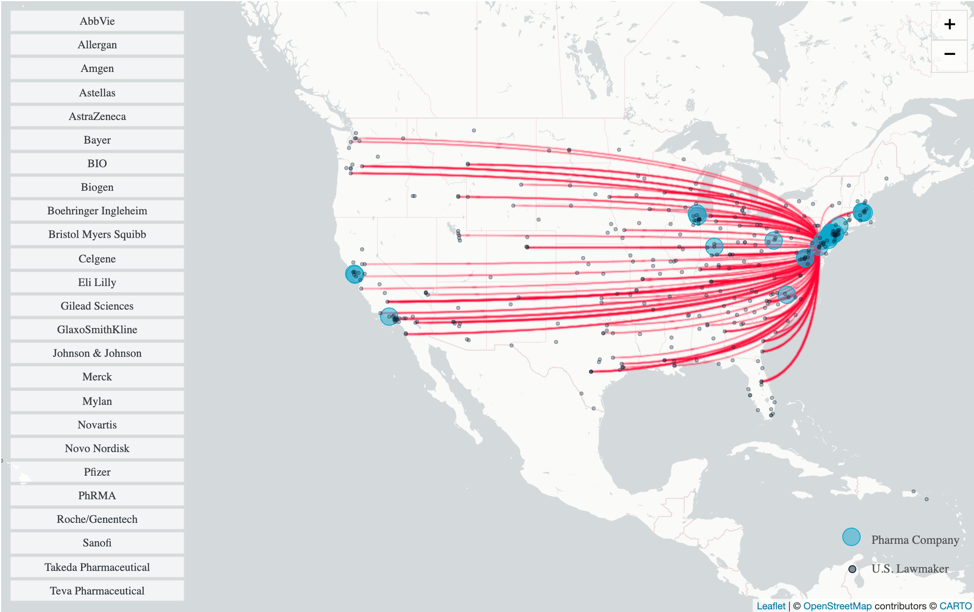
(From StatNews)
Contributions typically increase right before an election, but it appears especially so during a pandemic with so many medications in trial phases.
Kaiser Health News tracked the biggest recipients and givers.
The spending follows a long tradition of generous political giving. Major manufacturers typically make hundreds of modest donations to incumbent members of Congress but avoid donating to presidential candidates, seeing little utility in placing presidential bets.
As the COVID-19 pandemic has sparked a race among drug makers eager to develop a vaccine and improve the industry’s standing in Washington — pharma’s giving underscores the breadth of its influence and its efforts to curry favor through lobbying and donations to the lawmakers who regulate health care.
STAT’s examination focused on 23 of the biggest drug makers and the two major trade associations: PhRMA and the Biotechnology Innovation Organization, known as BIO. It includes a series of data visualizations that map the pharmaceutical industry’s spending and the lawmakers who’ve accepted its PAC donations.
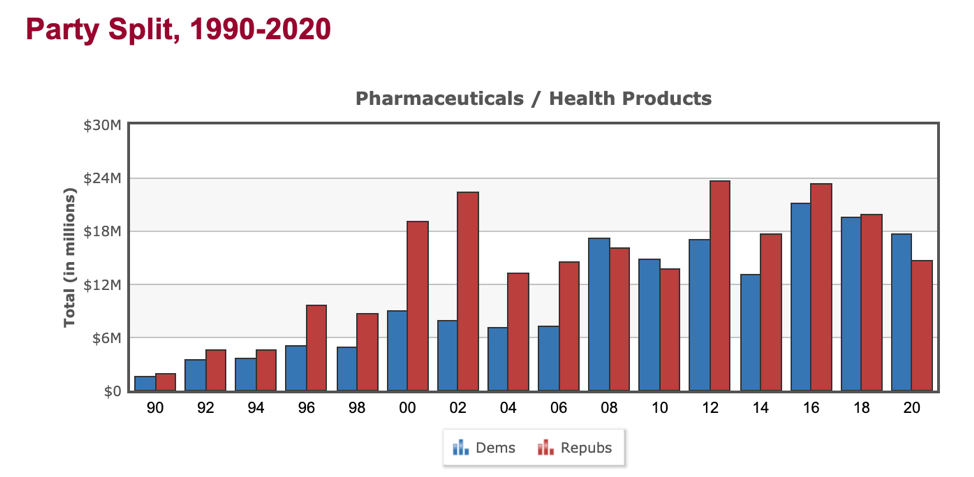
(Data and graphic from OpenSecrets.org)
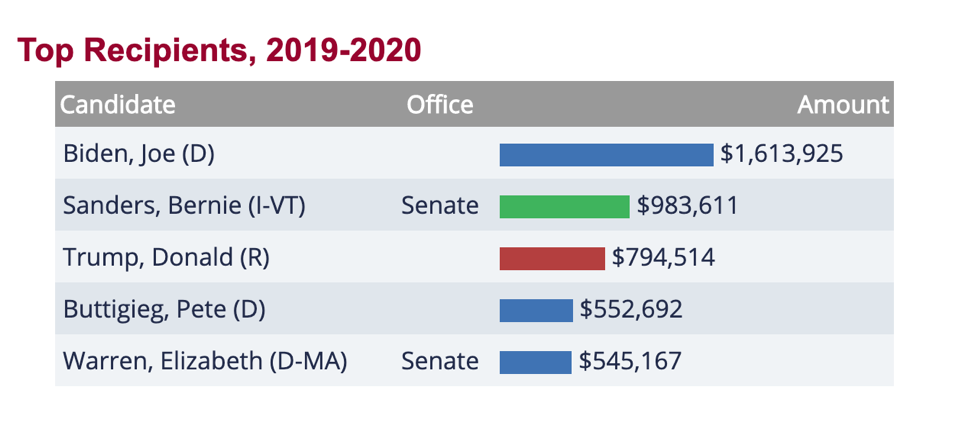
(Data and graphic from OpenSecrets.org)
A note to journalists: Just because a drug company gives to a candidate does not mean nor should you imply without proof that there is anything nefarious or unethical going on. As long as the contributions conform to disclosure and giving laws, this is the system we have to finance political campaigns. But at a time when drug pricing, national health care and COVID-19 trials are so front-and-center, there is a legitimate conversation for us to have about how much influence pharma companies have over health policy.
These two charts from Political Moneyline caught my eye. Look at health care lobbying and, in the second chart, pharma research companies’ spending on campaigns and lobbying.
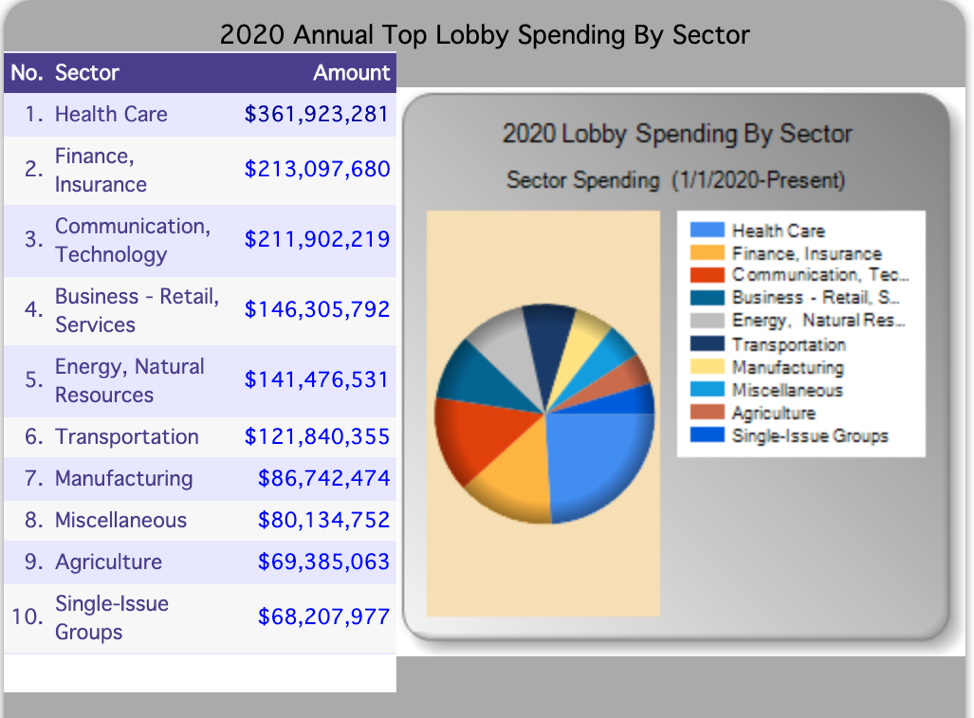
(Data and graphics from Political Moneyline)
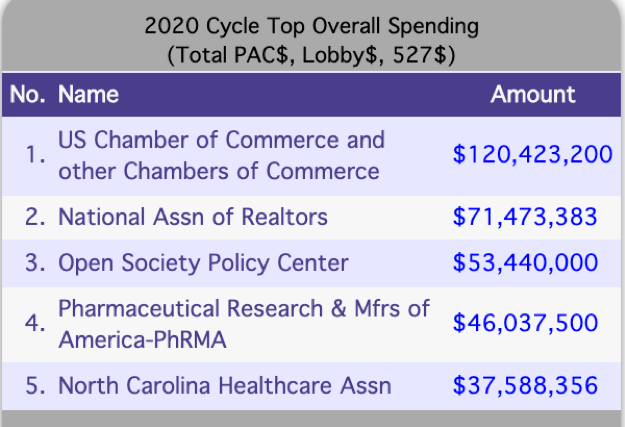
(Data and graphics from Political Moneyline)
Family doctors are growing desperate
Family physicians are under COVID-19 pressure. These few paragraphs from The Washington Post put things in perspective:
For primary-care doctors, the coronavirus is “an extinction-level event” that requires a stronger policy response from government and insurance companies, said Rebecca Etz, co-director of the Larry A. Green Center, a nonprofit organization based at Virginia Commonwealth University that advocates for stronger supports for primary medicine.
“After COVID, everything about health care is just going to be completely different,” Etz said. “We know the pandemic is not going to let us get back to normal for at least a year, and there is no normal to go back to.”
In addition to the fiscal crisis, doctors are juggling more work because of layoffs or staffers who quit, coping with chronic shortages of masks and other personal protective equipment, and struggling to keep track of chronically ill elderly people who are afraid to leave their homes. Crucial side revenue from things such as in-office tests and X-rays have completely dried up.
We’ll be back Monday with a new edition of Covering COVID-19. Sign up here to get it delivered right to your inbox.
Al Tompkins is senior faculty at Poynter. He can be reached at atompkins@poynter.org or on Twitter, @atompkins.

